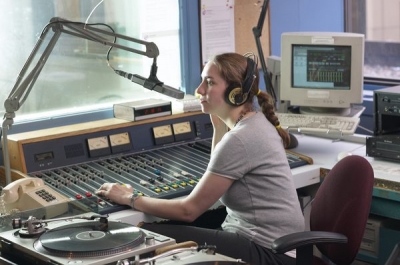
Radio signals are heard almost everywhere. But how does a radio work? The radio transmitter (where the sounds come from) changes sound waves into electrical signals. It sends them through the air as radio waves. The radio waves that leave the transmitter have different frequencies for each station. Frequencies are the number of times the waves vibrate per second.
You tune your radio by choosing a number on the controls. Each number represents a frequency. So if you always tune in the same frequency, you always pick up the same station.
When you tune in a station, signals are picked up by the radio. These signals are sent to an electromagnet in the radio speaker. The electromagnet makes a cone on the speaker vibrate. These vibrations are the sounds you hear on your radio. They sound exactly like the sounds made at the transmitter-voices, music, or even the squeak of a mouse.
An Italian inventor, Guglielmo Marconi, realized that coded messages could be sent over long distances without using wires. Because the transmitter and receivers did not need wires, the process was called wireless telegraphy. This discovery led to present-day radio.
Picture Credit : Google

